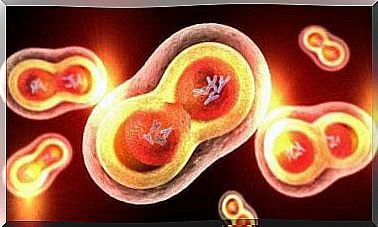Food Neophobia: What It Is And How To Deal With It
They may not know it’s called that, but all parents know about food neophobia. It is neither more nor less than the refusal of children to taste new foods. In this article we will describe this phenomenon in detail and above all how to deal with it.
The food neofobia is very common in many children around the world. Although it does not fall into the category of psychiatric disorders developed by the American Psychiatric Association (APA), it is an extremely frequent behavior.
Possible causes of food neophobia
Curiously, this behavior has to do with a primordial defense mechanism of the human being. In past ages, man fed on plants, many of which posed great risks to his life. This is why primitive men had to use the utmost caution when tasting them.
Often, this rejection arises from factors that have nothing to do with the simple tastes of young children. On many occasions, especially from the age of two, this manifestation – which does not happen only with regard to food – is an externalization of the desire for “independence” from the parents that the little ones feel. Obviously this is not the case. At that age, children have very deep addictive bonds with their parents.
In addition to this, childhood is a phase in which children learn about new flavors, smells and textures. It is quite logical that many of the latter appear strange or unappetizing to them. Over time, they will change their minds.
Finally, even negative experiences in the past can trigger food neophobia. This is the case of those foods that cause the child to become intoxicated, for example. Not to mention extreme cases, such as suffocation.

What dangers can it cause?
Food neophobia can involve complete food groups, such as fruit or vegetables. Therefore, it can lead to a certain lack of key nutrients that need to be supplemented.
In this sense, it is essential to consult a nutritionist to examine each child’s special needs and find a solution. However, it must be emphasized that this is a transitory condition. Although it is a disorder on which no conclusive studies have been carried out, it is estimated that in most cases, food neophobia disappears from the age of 6-7.
If not, then this rejection of some foods could become a serious problem. If only because the child enters school age and at school he will not be able to choose what to eat like when he is at home.
How to deal with food neophobia?
As we have said before, it is quite understandable that there is some specific food that the baby just does not go down. Yet, that doesn’t mean he has to discard all other foods from that food group. That is to say: he may not like apples, but that does not mean that it is okay for him not to eat fruit. Indeed, in these cases it is recommended to act as follows:
1. Lead by example
Leading by example is always the best option. If we want our baby to eat broccoli, we have to be the first to do it. On the contrary, it would be a real injustice to ask him to do something that we ourselves are not willing to do. Children see parents as a role model to follow. It will be easier to instill healthy habits in them if they see us adopting them too.
2. Be creative and patient
We cannot expect to offer a child a plate full of something he has never eaten and tell him to finish it all. The ideal thing is to start slowly, slowly, with small portions of this new food.
In fact, you can also change the way you present it so that the little ones do not perceive its presence. For example: disguise it in a cake, in a soup or in a hamburger, in the case of tomato or egg. With these small steps, you will progress more and more towards your goal.
Likewise, weaning with solid foods is very helpful in preventing food neophobia. The sooner a child gets used to new foods, the less effort you will have to incorporate them into his diet.

3. Don’t force them
When we force a child to do something, the only result we get is to multiply his aversion to that thing. In the case of food, we can foment a real refusal towards a food that perhaps they do not like today. The best thing is to let some time pass and give it another chance later on.
However, you also don’t need to replace a food with one they like best. This could create an association between bad behavior and a positive reward that would only reinforce the food neophobia.
Finally, it is advisable to make the children participate in the shopping and meal preparation process. This, combined with a pleasing presentation to the eyes will help to overcome the food neophobia and encourage the little one to experiment with new flavors.









